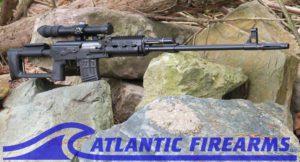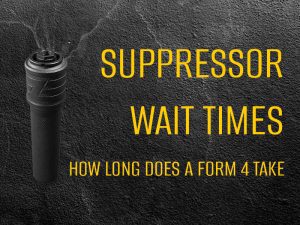You want a suppressor that looks sharp, weighs what it should, and keeps gas flow smooth. Ultrasonic cleaning of titanium suppressors checks all three boxes for ZastavaArms gear, including the titanium, 3D-printed designs you know and trust.
Cavitation bubbles do the scrubbing while you sip coffee. You just set the parameters, pick the right solution, and finish with a proper dry-out. Easy win.
Why Ultrasonic Pairs Well With Titanium
Titanium shrugs off most neutral, water-based baths and handles ultrasonic agitation without drama. Industry manuals and materials data back that up: benchtop cleaners commonly run at ~40 kHz, which suits precision parts, while moderate bath heat improves soil removal.
Titanium’s oxide layer gives excellent corrosion resistance in typical aqueous media used for precision cleaning. That combo makes ultrasonic a natural fit for Zastava Arms titanium suppressors.
Medical and industrial workflows even specify ultrasonic steps for titanium implants with neutral pH detergents, which tells you how gentle—and thorough—this method can be when you set it up correctly.
What You Need On The Bench
- Ultrasonic unit with heat control (target 40 kHz; mild heat up to ~40–50 °C).
- Neutral-pH, non-chlorinated, non-ammoniated aqueous cleaner; distilled or deionized water for makeup and rinses. Neutral solutions cut oils and soot without attacking titanium.
- Soft nylon brush, nitrile gloves, and lint-free cloths.
- Compressed air (oil-free) or a small blower.
- Optional: beaker-in-water method if you ever use a small volume of a flammable solvent for a final rinse; follow manufacturer safety rules.
Note: Avoid aggressive acid mixes. Strong acids can drive hydrogen into titanium and reduce ductility; you do not need them for carbon and fouling on Zastava Arms titanium cans. Neutral chemistry keeps you in the safe lane.
Prep Like A Pro
- Clear And Cool. Unload the rifle. Let the suppressor cool to room temperature.
- Remove And Inspect. Pull the can off. Check the bore and both thread interfaces.
- Protect Threads. Install a thread protector or wrap the mount so cavitation won’t be exposed edges.
- Mix The Bath. Use distilled water and the neutral detergent at the label ratio (often 1–2%). Warm the bath to ~40–50 °C for better soil release.
Run The Ultrasonic Cycle
- Degas The Bath. Run the tank for ~5 minutes with no parts; this purges dissolved gases and boosts cavitation efficiency. (Common practice in precision cleaning.)
- Suspend The Can. Use the parts tray. Keep the suppressor off the tank floor so the transducers do their job.
- Clock The Time. Start with 10–15 minutes for routine fouling. Heavy soot can call for up to ~20 minutes. Check progress; titanium tolerates these cycles well with neutral solutions.
- Agitate Gently. Flip the can once mid-cycle to expose different internal paths to the pressure waves.
What’s happening inside? Cavitation bubbles form and collapse at 40 kHz, which generates micro-jets that lift carbon, copper salts, and oil films from every surface the bath can reach—including tiny recesses in complex, additively manufactured flow paths.
That “invisible brush” effect is the whole advantage.
Rinse, Dry, And Re-Oil Threads
- Rinse In Distilled Water. Swish the can in a second container of hot, clean water to remove detergent residue. Neutral cleaners rinse fast, which cuts film and haze.
- Purge Moisture. Blow out the bore and the mount with oil-free air. Then set the can in a warm, dry spot until no trace of moisture remains. A mild oven set low (well under 66 °C / 150 °F) or a dehydrator speeds this up without stressing finishes.
- Protect The Threads. Once dry, apply a thin film of high-temp anti-seize or light oil to the threads and locking surfaces.
If you ever choose a small solvent step to displace water (for example, isopropyl in a beaker suspended in the water bath), keep ignition sources away and follow the beaker-in-tank method that equipment makers outline.
Water-based, neutral chemistry remains the default for ZastavaArms titanium suppressors—safe, simple, and effective.
Cycle Length And Temperature Cheat Sheet
- Frequency: ~40 kHz (typical benchtop spec).
- Temperature: ~40–50 °C bath temp for routine soil.
- Time: 10–15 minutes standard; up to ~20 minutes for heavy carbon before you reassess.
Pro Tips That Protect Titanium
- Choose Neutral Over Aggressive. Neutral pH solutions remove oils and light inorganic deposits without risking hydrogen pickup or finish damage.
- Rely On Distilled Water. Minerals in tap water can spot or leave residue after dry-out.
- Mind The Heat, Not Just The Time. Heat improves soil release, but you don’t need high temperatures for titanium; stay moderate and consistent.
- Keep It Simple Between Deep Cleans. After each range day, wipe the exterior, brush the threads, and store the can to dry. Schedule an ultrasonic session when mass gain or visible soot starts to bug you.
Why This Matters For Zastava Arms Cans
Zastava Arms builds titanium silencers for hard use. Ultrasonic care keeps weight stable, helps gas flow stay predictable, and saves finish work on external surfaces because you don’t grind at fouling by hand.
Neutral chemistry plus 40 kHz cavitation reaches the complex internal geometry you want to keep clean—without harsh acids, without drama, and without a workbench full of crusty brushes. That means more range time and less shop time.
Bottom Line
Use a neutral, water-based bath; set 40 kHz and moderate heat; run a short cycle; rinse and dry completely. Ultrasonic cleaning of titanium suppressors keeps your Zastava Arms can light, clean, and ready for the next session—no drama, no harsh chem lab required.



